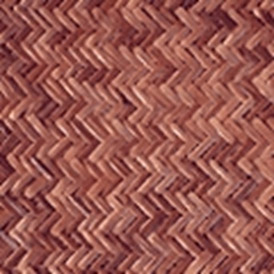The state's renowned Cane & Bamboo Handicrafts, particularly in South and West Tripura, boasts a rich cultural heritage with the use of state-abundant bamboo and Cane, prominent in districts like Kailasahar and Dharmanagar and Agartala producing items such as sculpture, textiles, food, medicine, and incense industries, handicrafts mats, fruit-baskets, finely woven screens resembling ivory, furniture items and thriving industries like bamboo matting producing items such as fans, lampshades, and handbags and decorative items, fish traps (Sudha), fish baskets (Dulla), rain shields (Pathla), headgear, small woven animal forms , housing and field fences (Riang Tribe) and smoking pipes (Riang Hookah). These sustainable articles are crafted, woven or constructed using varied techniques by artisans’ showcasing the cultural significance of Cane and bamboo in Tripura’s handictrafts and daily life..Craft promotion through initiatives like the Craft Teacher’s Institute and Bamboo and Cane Development Institute in Agartala enhances skill development.
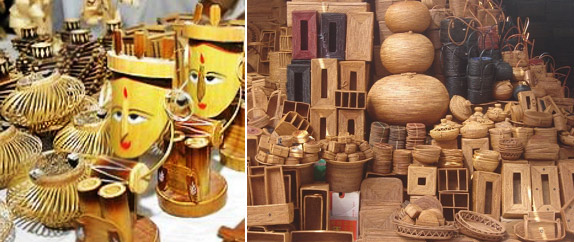
Melaghar and Palpada villages in the West Tripura district are well-known for their distinctive technique of pressed clay art. The process involves moulding clay by pressing it into plaster-of-Paris moulds created from meticulously crafted original pieces . The villagers initially focused on creating wheel-thrown pottery and utensils. Over time, they diversified their craftsmanship to include oil lamps, flower vases, decorative wall tiles, and practical roofing tiles, showcasing their expertise. Particularly ,during local festivals and fairs, statues depicting popular gods and goddesses hold significant prominence. Another notable feature of Tripura's pottery tradition is the creation of dies and moulds crucial for crafting clay- baked moulds used in making traditional sweets such as sondesh.
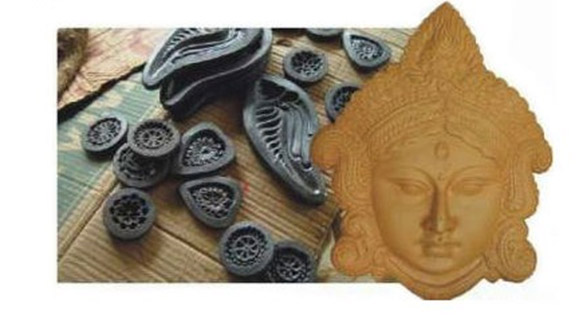
Basketry in Tripura caters to specific community needs and enjoy substantial markets across India. The Jamatia Firewood Basket, made from bamboo, facilitates firewood transport with its square base and widening sides. The Riang Carrying Basket, tightly woven from bamboo splits and cane bindings, serves the Riang tribe for grain transportation and marketing. Shallow carrying baskets like the Tukri from Agartala and the Karawala Tukri, equipped with handles, are used for construction materials by Bengalis. The Laii, a small twill-patterned bamboo basket, is ideal for washing rice. Small storage options such as the Sempa Khari and Date Basket are woven from bamboo splits. Specialized baskets like the Turi for puffed rice and Cattle Muzzles for cattle restraint showcase bamboo's versatility. The Grain Storage Basket, made with cow dung, clay, and rice husk, features a large square base tapering to a circular rim for efficient grain storage.
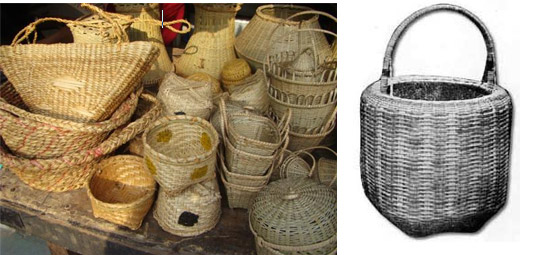
Risa, a versatile handwoven fabric used by Tripura's tribal communities, is multi- purpose ,as it is essential in rituals like Risa Sormani and festivals such as Garia Puja, adorning bamboo poles and serving as festival headgear for men. Together with Rignai (lower colourful skirt-like drape) and Rikutu (pallu –like full body cover), Risa completes the traditional attire of Tripuri women , which is said to have its roots dating back to a period predating the reign of the Manikya kings, who governed Tripura during the early 15th century. Rikutu also functions as shawls in winters, covering the heads of newly married women and as formal wear. These garments hold significant cultural and practical importance in Tripura's social and religious life. Every tribe has distinguished designs and patterns ,ranging from horizontal stripes, geometrical motifs, vibrant colors which potrays volumes about the craftsmanship.
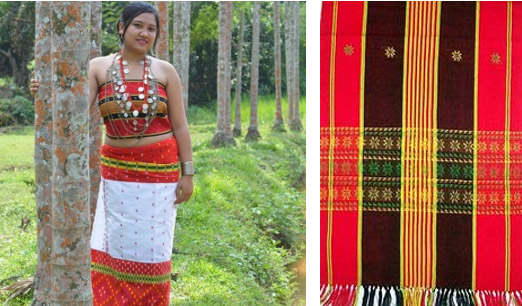
Lasingphee, or quilted cotton fabric, is a type of weaving where the cloth is padded with cotton during the weaving process.This fabric features a distinctive construction where cotton is inserted at regular intervals between the woven strips of cloth. It is woven on a specialized loom and is completed as soon as it is taken off the loom, and is known for it’s exceptional warmth and softness. The fabric is known for its ornate designs, often intricate and decorative. Artisans skilled in lasingphee weaving can also be found in Tripura. In Assam, bamboo sticks are sometimes used instead of cotton for the padding.This fabric is also made in Manipur and serves as a winter covering. Popular items crafted from lasingphee include quilts, scarves, bedspreads, shawls, mats, gowns, and hunting coats.
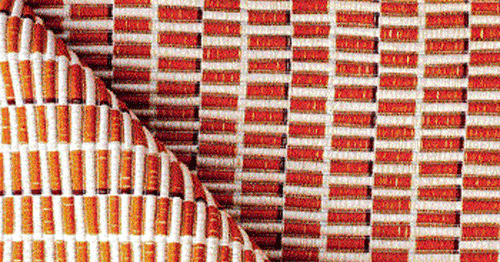
Sitalpati Mats or popularly known as 'cool mats' in West Bengal, Assam , Bangladesh as well as in Tripura . Sitalpati mats are crafted starting with the growth of ‘Murta’ plants. Skilled artisans handpick and harvest these reeds , which are meticulously split into fine strips and woven together to form the mats. This weaving demands precision and years of practice, resulting in each mat becoming a distinct work of art. Over time, the reeds' green color naturally transforms into a radiant golden shade, enhancing the mats' visual charm. The designs vary from geometrical shapes , stripes to floral designs showcases the artisans’ creativity. These mats are quite prominent during the time of summers because of its’ cooling properties as well as in festivities, religious occasions and weddings.
